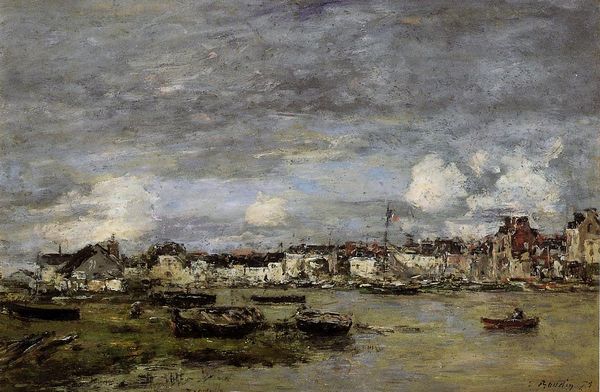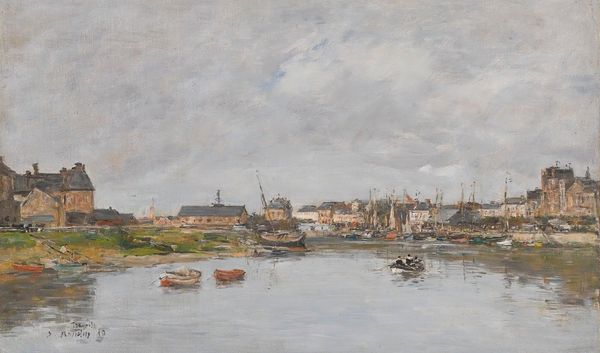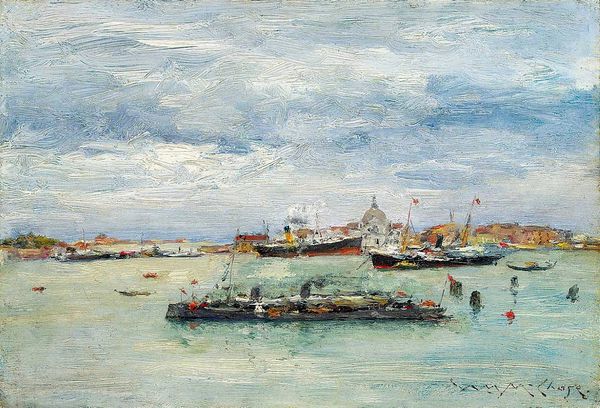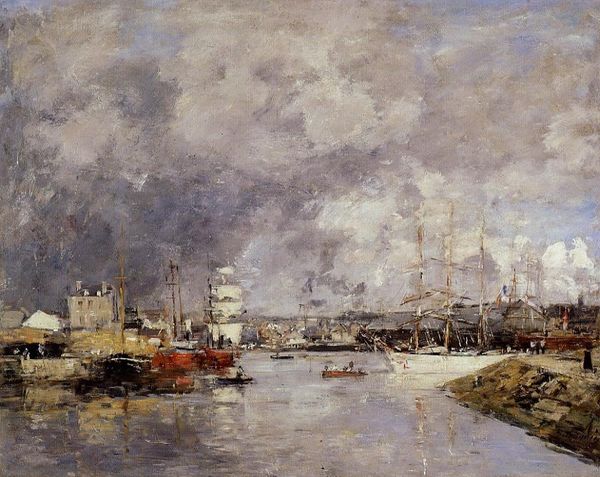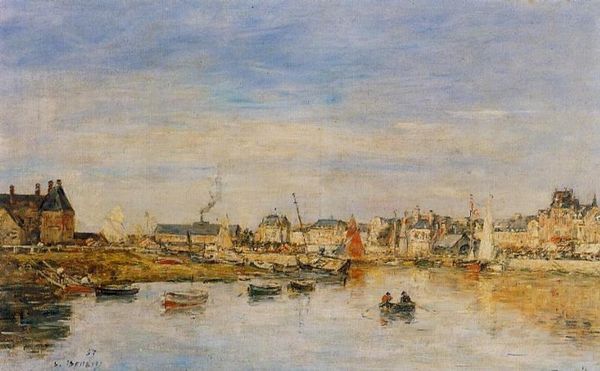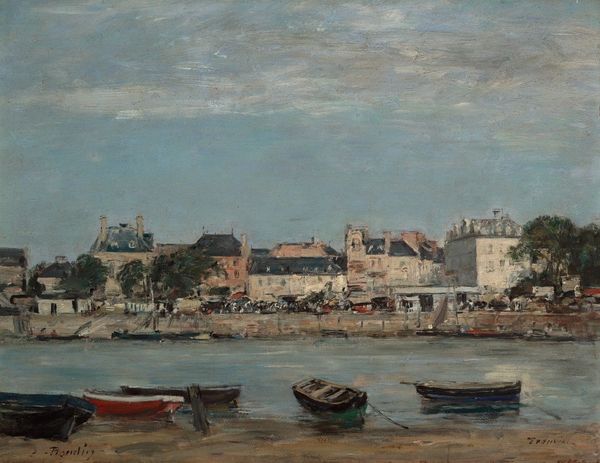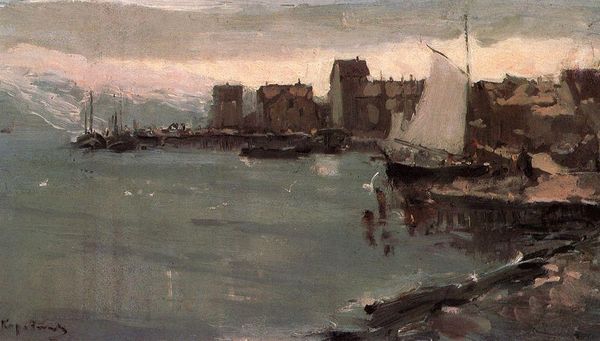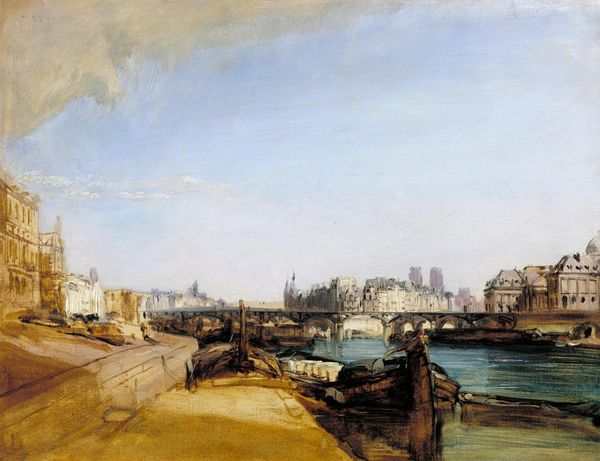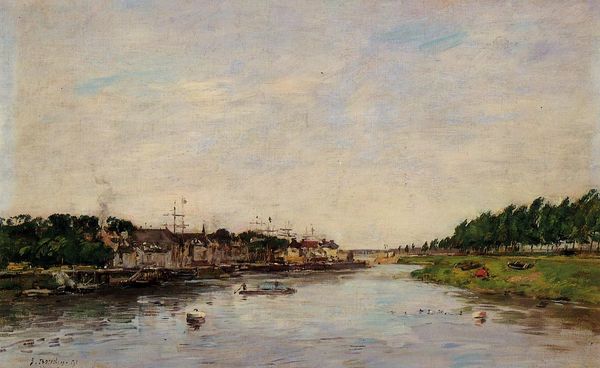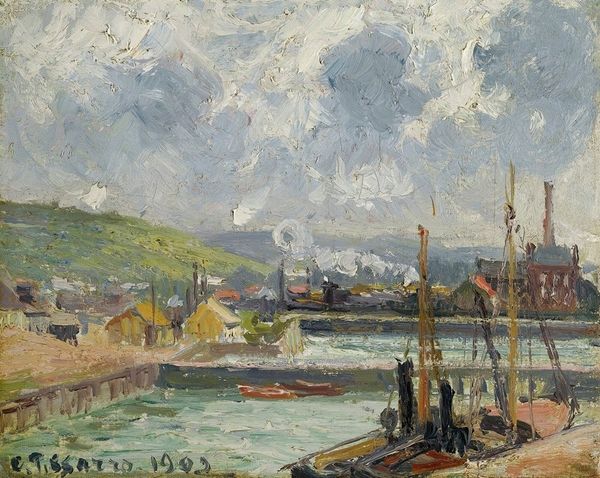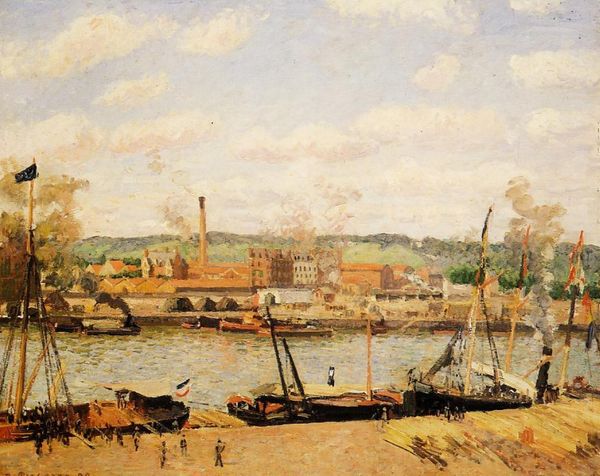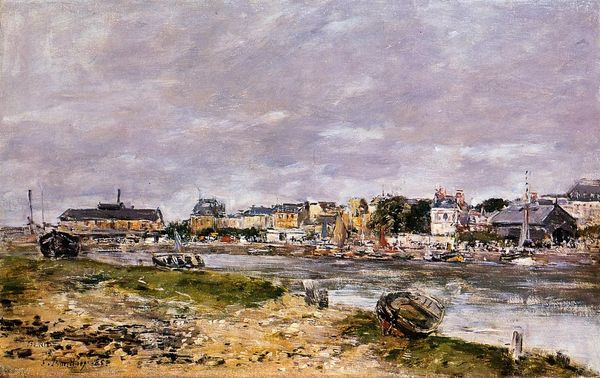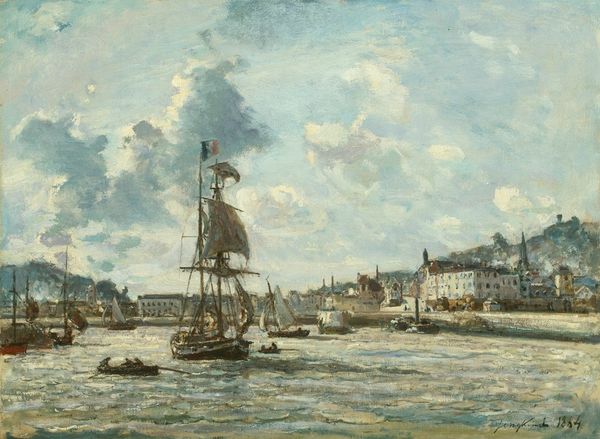
plein-air, oil-paint
#
impressionism
#
plein-air
#
oil-paint
#
landscape
#
impressionist landscape
#
oil painting
#
seascape
#
cityscape
#
watercolor
Copyright: Public domain
Editor: This is "The Inner Port of Trouville at Low Tide" by Eugène Boudin, and it looks like it was created using oil paint, maybe en plein air. The color palette feels very muted, and there's almost a haze over the whole scene. What do you see in this painting? Curator: I see a record of labor and industry, presented with an Impressionistic sensibility. The "low tide" of the title is crucial; it reveals the underbelly of a port, exposing the messy reality of maritime commerce. How do you think Boudin's choice of subject relates to the broader social changes happening in France at the time? Editor: Well, industrialization was changing the landscape quite a bit, but I mostly see pretty buildings and boats! Is it about something more than just the aesthetic appeal? Curator: Absolutely. Boudin's work, like many Impressionists, offers a glimpse into the everyday lives of the working class during a period of rapid modernization. He's capturing a moment of transition, and also who is caught up in that moment. It’s important to consider class and gender in these spaces. What do you notice about the figures depicted here? Editor: I see some people on the right, close to the water; it is hard to make out a lot of detail. Curator: Exactly. They appear to be women. And that detail makes it important to ask how Boudin represents these anonymous figures laboring in this industrialized space. Are they romanticized? Exploited? It's through this lens that we can unpack the painting's social commentary. Editor: That makes me think about how landscape painting, in general, is always about more than just pretty scenery. I didn’t realize that it could make a statement. Curator: It is also worthwhile considering the Impressionists relationship to painting *en plein air*, moving art outside of the studio, breaking down traditional hierarchies around painting, art production and the gaze of the art world. Editor: This has given me a lot to think about— thank you! Curator: It was my pleasure, and a good reminder for me that art exists in a constant state of exchange with those who view it!
Comments
No comments
Be the first to comment and join the conversation on the ultimate creative platform.
